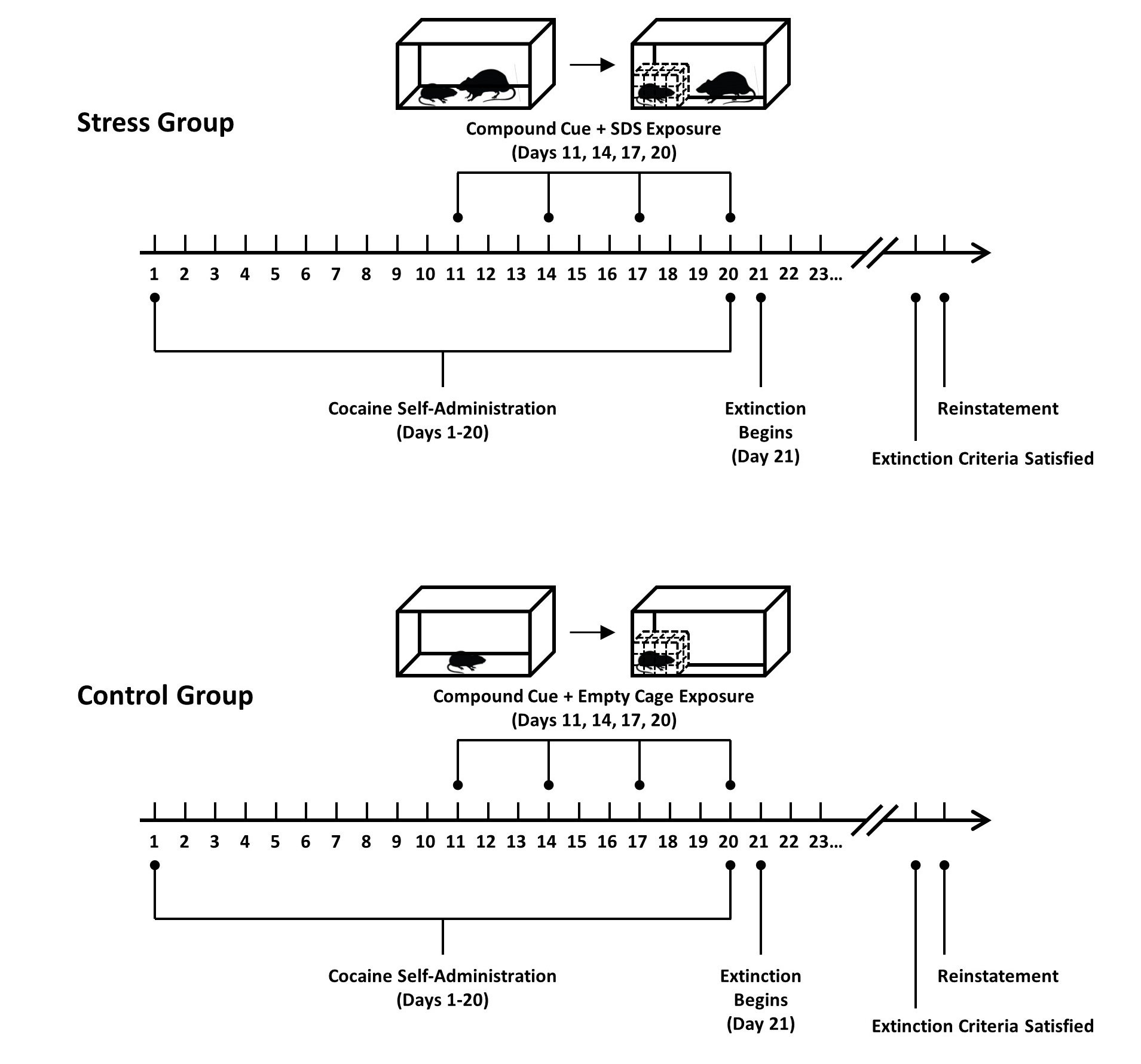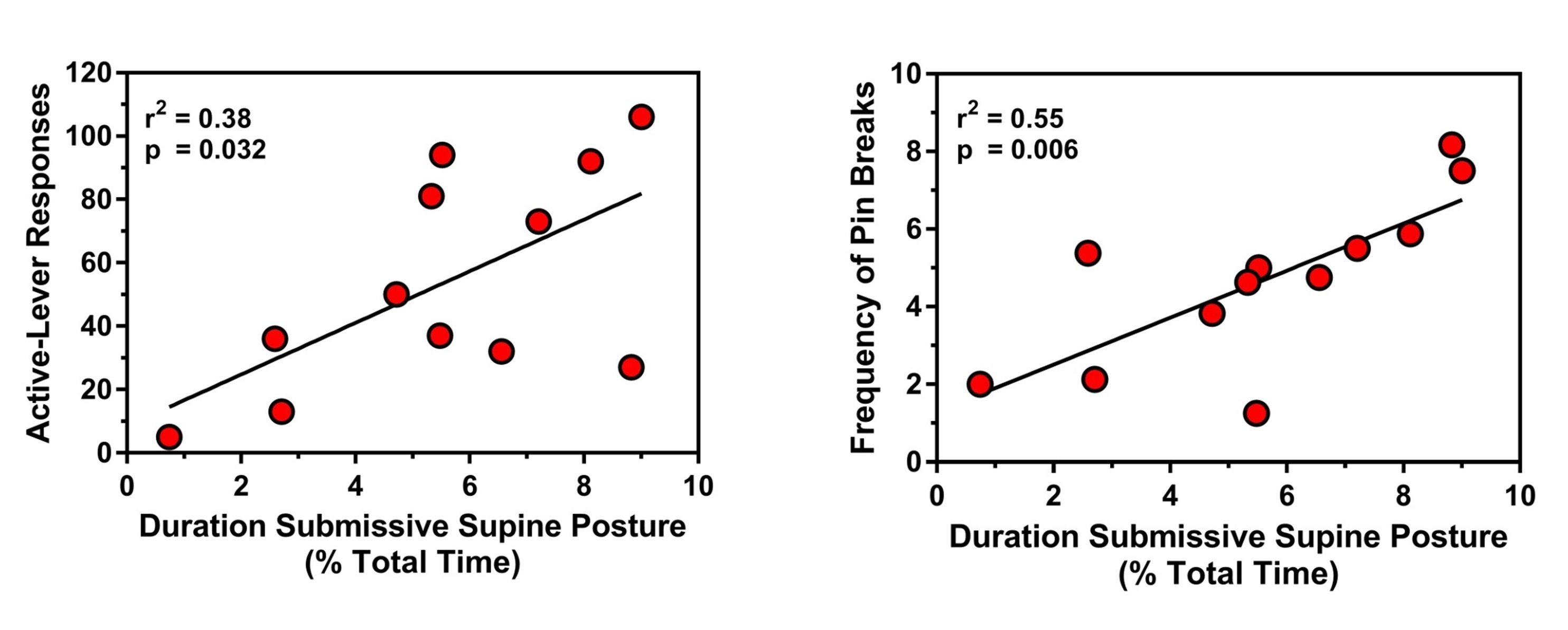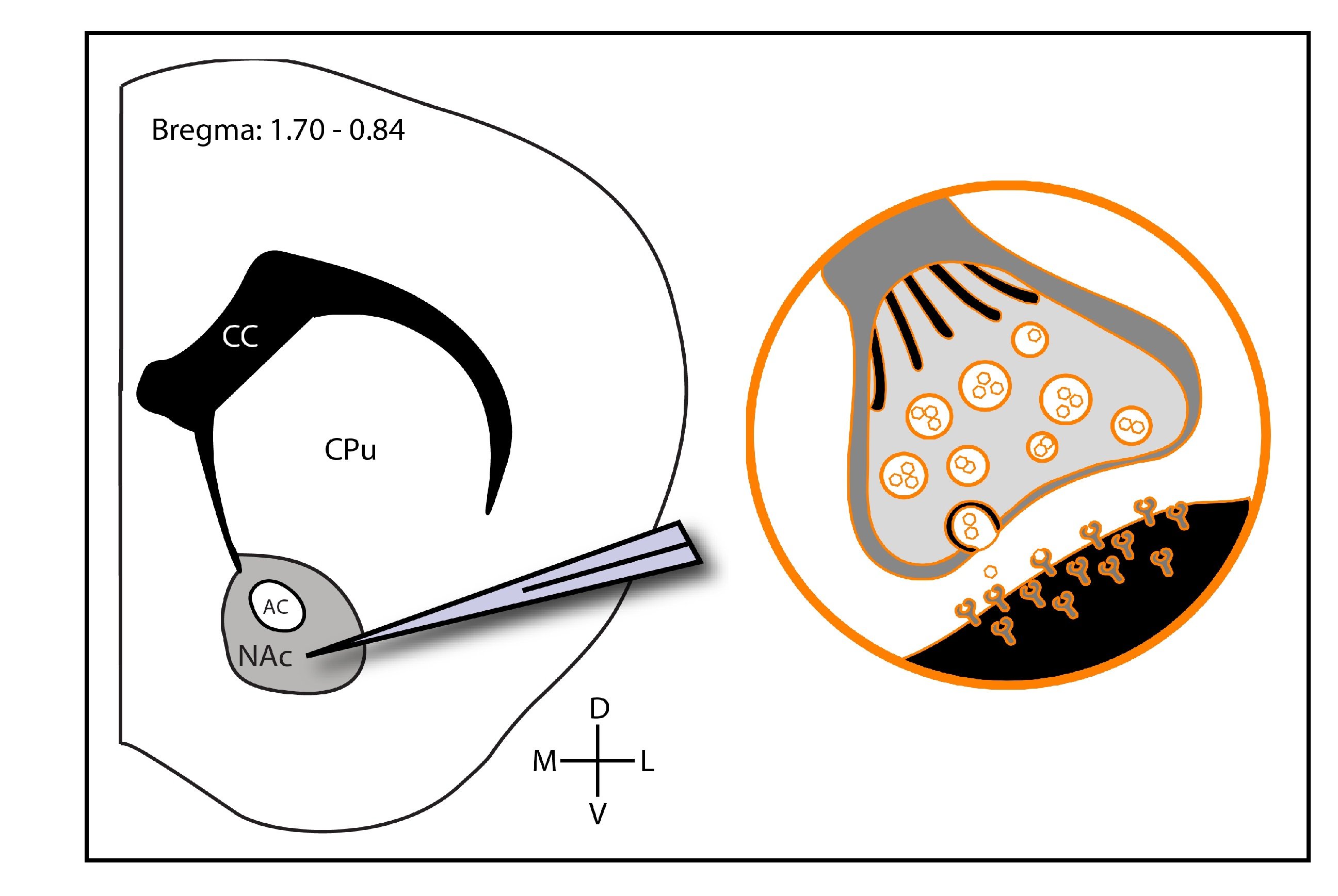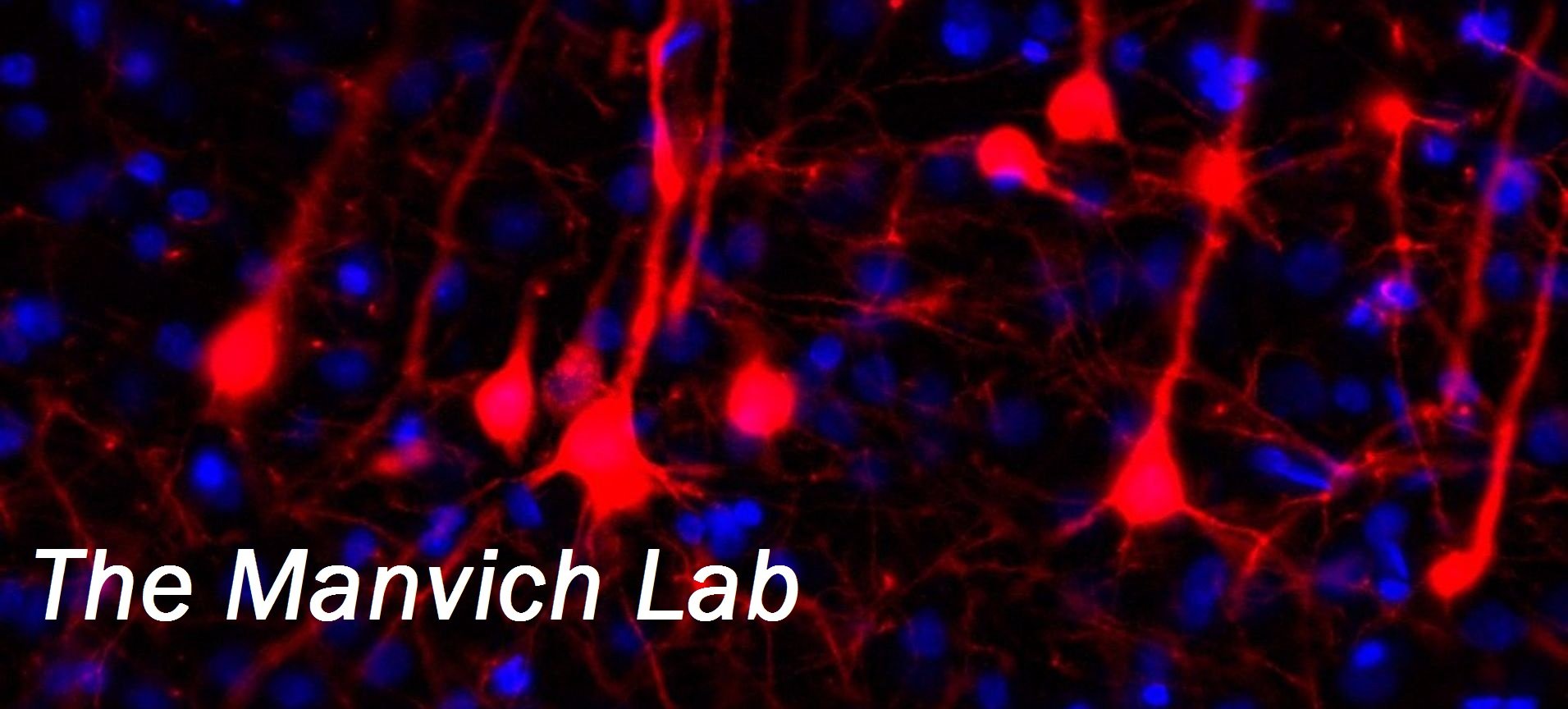research-projects
research-projects
Scroll down to learn more about our ongoing and impending studies
Neuroanatomy of psychosocial stress-induced drug seeking
The goal of this project is to better understand the neural mechanisms through which stress triggers subjective craving and seeking of drugs of abuse, and how an individual's stress-coping style is related to their vulnerability to drug intake and/or relapse. Although individuals with substance use disorders frequently experience psychosocial stressors and consequently suffer from drug craving and relapse events, the majority of preclinical studies investigating stress-induced drug seeking have not employed psychosocial stressors as the triggering stimulus. This limitation is noteworthy because psychosocial stressors are known to activate distinct pathways in the brain that are not engaged by other types of stressors. By combining our unique model of psychosocial stress-induced reinstatement of drug seeking with c-Fos immunohistochemistry and chemogenetic approaches to manipulate neural activity in vivo, we are working to identify the brain circuits that are recruited by psychosocial stress to cause drug-seeking behavior. Ultimately, we hope that our findings will mark a major advance in the fight on addiction as they may reveal new neurobiological targets for development of medications and/or other behavioral therapies to reduce drug craving following exposure to psychosocial stress.

The role of stress-coping strategies in substance use disorders and neuropsychiatric disease
We have previously reported that whether an individual subject exhibited "active" or "passive" coping strategies in response to psychosocial stress was predictive of how hard they would work to obtain drug when re-exposed to the stressor again. Experiments are now underway to determine whether individual differences in stress-coping strategy are also associated with other behavioral responses, such as the effects of first-time drug exposure, anxiety-like or depressive-like phenotypes, etc. The goal of these studies is to elucidate biobehavioral traits that may predict vulnerability to drug addiction and relapse, which could in turn be used to tailor treatments to particularly vulnerable populations. They will also lay the foundation for future research examining factors that contribute to these trait differences, such as genetic and epigenetic influences, early-life experiences, neural circuit function, etc.

Shown above: subjects that exhibit a stronger "active" coping response to social stress (e.g. frequently escaping from supine submission) display greater stress-induced drug seeking responses
Evaluating the impact of dopamine D3R antagonism on effects of drugs of abuse
 Mounting preclinical evidence suggests that selective D3R blockade modulates the abuse-related effects of both opioids and psychostimulants. However, the underlying mechanisms by which D3R antagonism alters the neuropharmacological and/or behavioral effects of these drug classes are not yet fully understood. We recently reported that selective D3R antagonism potentiates cocaine-induced behavioral activation and sensitization, and also enhances dopamine signaling in D1-expressing medium spiny neurons within the nucleus accumbens. Surprisingly however, we found that selective D3R antagonism attenuates the behavioral effects of the opioid morphine (manuscript currently in preparation). This suggests that D3R antagonists may differentially modulate the effects of different classes of drugs of abuse (i.e. opioids vs. psychostimulants). New studies are underway in our lab to assess the modulatory effects of D3R antagonists on other drugs of abuse, and to determine the neuropharmacological and/or neurobiological mechanisms by which D3R antagonism exerts opposite influences on psychostimulants vs. opioids.
Mounting preclinical evidence suggests that selective D3R blockade modulates the abuse-related effects of both opioids and psychostimulants. However, the underlying mechanisms by which D3R antagonism alters the neuropharmacological and/or behavioral effects of these drug classes are not yet fully understood. We recently reported that selective D3R antagonism potentiates cocaine-induced behavioral activation and sensitization, and also enhances dopamine signaling in D1-expressing medium spiny neurons within the nucleus accumbens. Surprisingly however, we found that selective D3R antagonism attenuates the behavioral effects of the opioid morphine (manuscript currently in preparation). This suggests that D3R antagonists may differentially modulate the effects of different classes of drugs of abuse (i.e. opioids vs. psychostimulants). New studies are underway in our lab to assess the modulatory effects of D3R antagonists on other drugs of abuse, and to determine the neuropharmacological and/or neurobiological mechanisms by which D3R antagonism exerts opposite influences on psychostimulants vs. opioids.
Sex differences in the abuse-related effects of opioids

